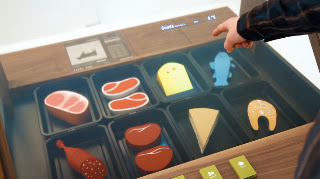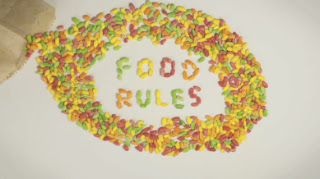The Agriculture Deputy Secretary, Kathleen
Merrigan, today announced more than $4.5 million in grants for 68 projects,
spanning 37 states and the District of Columbia, to connect school cafeterias
with local agricultural producers. “When schools buy food from nearby producers,
their purchasing power helps create local jobs and economic benefits, particularly
in rural agricultural communities,” Merrigan said. “Evidence also suggests that
when kids understand more about where food comes from and how it is produced,
they are more likely to make healthy eating choices.”
The first-ever USDA Farm to School grants
will help schools respond to the growing demand for locally sourced foods and
increase market opportunities for producers and food businesses, including food
processors, manufacturers, distributors. Grants will also be used to support
agriculture and nutrition education efforts such as school gardens, field trips
to local farms, and cooking classes. The funding will serve more than 3,200 schools
and 1.75 million students, nearly half of whom live in rural communities.
Projects are diverse, and consider multiple ways to tackle the task. Some award recipients, such as the Lawrence County
District in Walnut Ridge, Ark., are using grant funds to coordinate efforts
with other school districts to aggregate buying power and attract new producers
to the school food service market.
Other funded projects, such as Weld County
School District 6 in Greeley, Colo., will expand kitchen facilities to serve
local products year-round through processing and freezing techniques. Some schools in New Mexico will receive grant funding to increase
the types of products it buys from local vendors. Local cattle farmers already
supply the school district with 100 percent locally produced beef; USDA grant
funds will be used to develop relationships with local fruit and vegetable
producers to serve a full meal using locally sourced products.
This year’s funding also includes:
- Twenty-five programs that create jobs by hiring new farm to school coordinators, with 43 projects supporting and maintaining existing staff. In New Haven, Conn., CitySeed, Inc. will hire a procurement specialist to help New Haven School Food Programs increase the amount of regionally grown produce in the meals of more than 20,900 urban public school students. (Nearly 80 percent of them qualify for free or reduced-cost lunch).
- Thirty-one programs that use food hubs, or partner with mainline distributors. In California, the Community Alliance of Family Farmers will work with a local distributor to create a new line of local produce, making it easier for schools to source products through current distribution channels.
- Forty-four projects that will result in development of new products and menu items. For example, the Lake County Community Development Corporation, in Ronan, Mont., will coordinate with regional lentil farmers to procure protein and fiber rich lentil patties.
- An estimated 47 projects will develop new partnerships by working with and educating farmers and ranchers new to the school food market. For example, the Washington State Department of Agriculture will conduct regional "mobile tours" in which agricultural producers and school food service directors tour the state together, learning about agricultural specialties, identifying opportunities for partnership, and solidifying regional networks.
- Three projects support American Indian communities, including the Fond du Lac Band of Lake Superior Chippewa in Cloquet, Minn. The reservation will implement a program to improve access to local and traditional foods to increase local economic benefits for producers as well as promote a healthy diet among their youth.
- More than 50 projects support hands-on learning activities, such as field trips to farms and creation of school gardens. The Southwest Georgia Project for Community Education, Inc. will coordinate tours of nearby farms for its 35 school partners, serving nearly 21,000 students.
The Healthy, Hunger-Free Kids Act of 2010
(HHFKA) amended Section 18 of the Richard B. Russell National School Lunch Act
(NSLA) to establish a Farm to School program in order to assist eligible
entities, through grants and technical assistance, in implementing farm to
school programs that improve access to local foods in eligible schools. Farm to
School grants are administered by USDA’s Food and Nutrition Service. The full list of awards granted for fiscal year
2013 is available here.
Farm to School is one component of USDA’s Know Your Farmer, Know Your Food initiative, launched in 2009 to coordinate
the Department’s work on local and regional food systems and create new
opportunities for farmers, ranchers, consumers and rural communities. An interactive
view of USDA programs that support local and regional foods, including farm to
school and farm to institution, is available in the Know Your Farmer, Know Your
Food Compass. The KYF Compass consists of an interactive map
of USDA-supported local and regional food projects and an accompanying guide to our programs and results on the ground. In October, the map
was expanded and now includes projects from nine other federal agencies.













